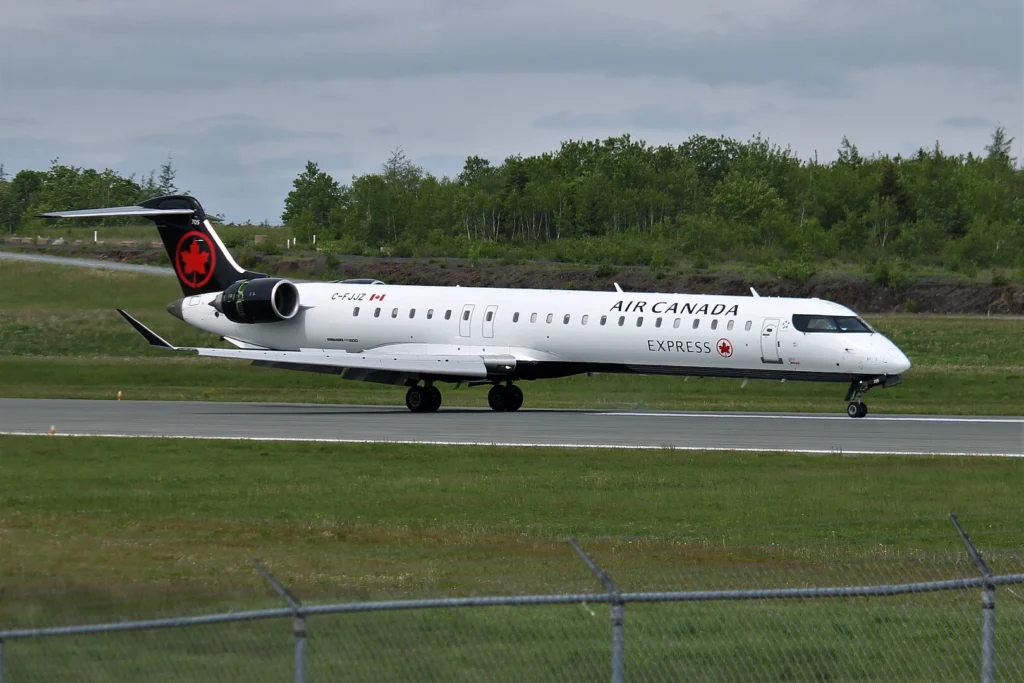TORONTO- On September 11, 2024, Air India (AI) aircraft avoided a collision with a Jazz Aviation plane at Toronto Pearson International Airport (YYZ).
A potentially hazardous situation during routine operations highlights the critical importance of runway coordination and safety protocols.

Air India Toronto Incident
The incident involved a Jazz Aviation Canadair CRJ-900, registered as C-GJHZ that had just landed from Philadelphia (PHL) and an Air India Boeing 777-300ER preparing for departure to Delhi (DEL).
While appearing routine at first glance, the sequence of events has drawn the attention of aviation safety authorities.
According to official reports, the CRJ-900, operating as Flight QK-931, had landed on Runway 24 and received clearance to taxi via Delta 4 and Delta, including permission to cross Runway 33R. Simultaneously, the Air India Boeing 777-300, operating as Flight AI-188, had specifically requested Runway 15L for departure, citing performance requirements, despite Runway 23 being the active departure runway at the time.

The situation became critical when the CRJ began crossing the runway just as the Boeing 777 had commenced its takeoff roll. At this point, the larger aircraft had reached approximately 11 knots indicating airspeed (KIAS). Ground control quickly intervened, instructing the CRJ to expedite its crossing of the runway.
The severity of the situation became apparent as the Boeing 777 continued its takeoff roll, reaching 135 KIAS when the CRJ finally cleared the runway. Data from the investigation revealed that at this critical moment, the two aircraft were separated by approximately 6,700 feet (2,042 meters) horizontally.
The distance of 6,700 feet seems far and safe but this can be covered by planes in seconds.
Following the incident, Air India flights arrived 40 minutes later than their expected arrival time in Delhi.
Air India flight was operated by Boeing 777-300ER, registered as VT-ALO (also named as Karnataka). It is a 15-year-old aircraft and is powered by GE90 engines.
The Canadian Transportation Safety Board (TSB) recently documented this occurrence and classified it as a Class 5 incident, according to reports from The Aviation Herald.

Similar Incidents
Well, we all know what happened to Japan Airlines (JL) Airbus A350. JAL flight 516 had been granted permission by an air traffic controller to land on the runway at Tokyo’s Haneda Airport just before the collision with the coastguard aircraft, resulting in a fiery incident.
The collision claimed the lives of five crewmembers on the Japan Coast Guard (JCG) plane, which was preparing to take off to deliver aid to the city of Niigata in the aftermath of the deadly New Year’s Day earthquake.
Fortunately, all 379 passengers and crew on the commercial JAL flight were successfully evacuated just moments before the jet succumbed to flames—a turn of events that many have hailed as a ‘miracle.’
Similarly, a major crash was averted on Saturday (June 8, 2024) at Mumbai Chhatrapati Shivaji Maharaj International Airport (BOM). IndiGo (6E) flight 6E5053 operated by A320neo from Devi Ahilyabai Holkar Airport (IDR) landed on Runway 27 while Air India (AI) flight AI657 operated by A320neo was still taking off for Thiruvananthapuram International Airport (TRV).
IndiGo officially stated,
On June 8, 2024, the IndiGo flight from Indore to Mumbai was cleared by ATC to land at BOM. 6E pilots followed all the ATC’s instructions for approaching and then landing. We give primary focus to safety and have reported the incident to the Directorate General of Civil Aviation (DGCA).
IndiGo Statement
There are many such runways near misses and loss of separation incidents that could turn into massive disasters if not properly handled as these metal birds fly near to speed of sound and are so powerful.
Both Pilots and ATC staff need to have proper visuals and awareness of their surroundings to avoid such incidents.
Featured Image by Utkarsh Thakkar (@vimanspotter)
Stay tuned with us. Further, follow us on social media for the latest updates.
Join us on Telegram Group for the Latest Aviation Updates. Subsequently, follow us on Google News

